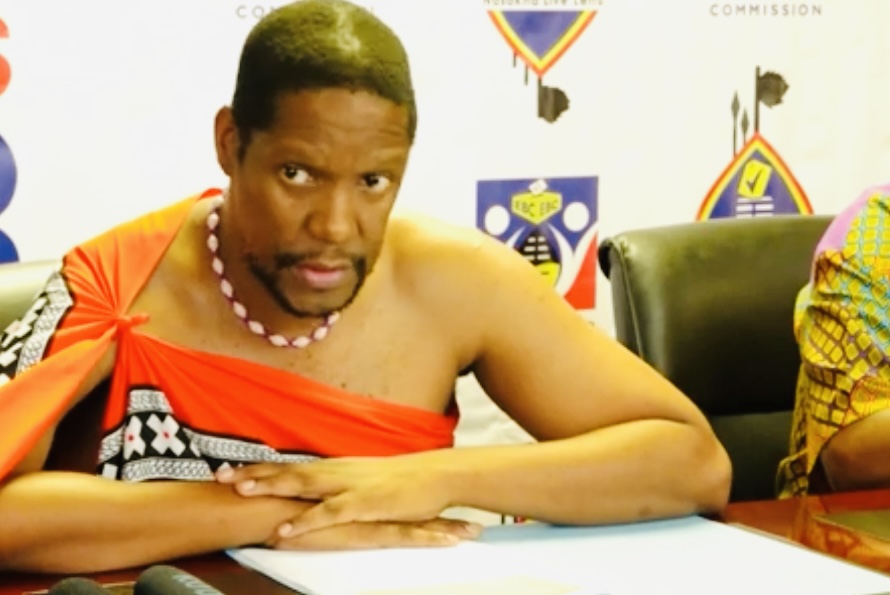
Prince Mhlabuhlangene, the Chief of the Elections and Boundaries Commission (EBC). Image: EBC.
(The Post News)– Prince Mhlabuhlangene, Chairperson of the Elections and Boundaries Commission (EBC), explained that under the Tinkhundla system in Eswatini, formerly Swaziland, traditional leaders can summon Members of Parliament (MPs) to allow the electorate to hold them accountable and assess their performance.
Understanding the Tinkhundla Political System
When Swaziland News approached him on Thursday about Chief Mshikashika of ka-Ngcamphalala, reportedly planning a community gathering to review the performance of Siphofaneni MP Nomalungelo ‘LaZwide’ Simelane, the EBC Chairperson first outlined the Tinkhundla system.
He asked to explain the “Tinkhundla Political System of Government,” government, not governance, as it is often misunderstood. Tinkhundla is a political framework through which the Eswatini Monarchy governs, integrating elements of Western parliamentary democracy at the governmental level. He described it as a political framework under which the Eswatini Monarchy regulates, incorporating aspects of Western parliamentary democracy at the government level.
He also mentioned that each of the Tinkhundla that comprise the nation is made up of numerous chiefdoms. Furthermore, candidates are nominated inside their chiefdoms but compete at the Inkhundla level during general elections for Tindvuna te-Tinkhundla and MPs—the representatives are elected by voters from each of the Inkhundla’s chiefdoms.
He clarified that no single kraal represents an entire inkhundla. Any chief within an inkhundla may summon an MP, but only for accountability purposes.
Chiefs’ Role in Accountability
According to Simelane, Inkhundla does not have a central kraal: “As you know, there is no central kraal for an Inkhundla. Thus, any chiefdom in the Inkhundla has the authority to summon elected officials. The eMphakatsi, the Chiefdom’s kraal, should receive these summonses since they are intended for the people of the Chiefdom, not the Chief directly. Moreover, he explained that residents here are able to hold MPs, Bucopho, and Indvuna YeNkhundla responsible and evaluate their performance.
He emphasized, “A chief may convene elected representatives solely on behalf of the people in their chiefdom. They cannot act for personal reasons. Only the Chief can issue an uMphakatsi Sibaya summons, giving voters the opportunity to question and evaluate their officials, including the MP.”
The Chairperson also clarified that a Chief cannot summon officials from outside their electoral area. “Chief Mshikashika demonstrates a proper understanding of the Tinkhundla system by inviting officials to eSibayeni seMphakatsi gatherings. This allows residents, not the chief, to hold elected representatives accountable. These gatherings ensure transparency while respecting Swati customs and grassroots governance.”
He concluded, “The gathering, known as eSibayeni seMphakatsi, is not the main Inkhundla Sibaya. According to tradition, events at eSibayeni seMphakatsi or other locations chosen by the chief are public. All community members can speak freely while maintaining decorum and respect. I trust this explanation clarifies the chief’s role in inviting political officials and the accountability process under the Tinkhundla system.”



